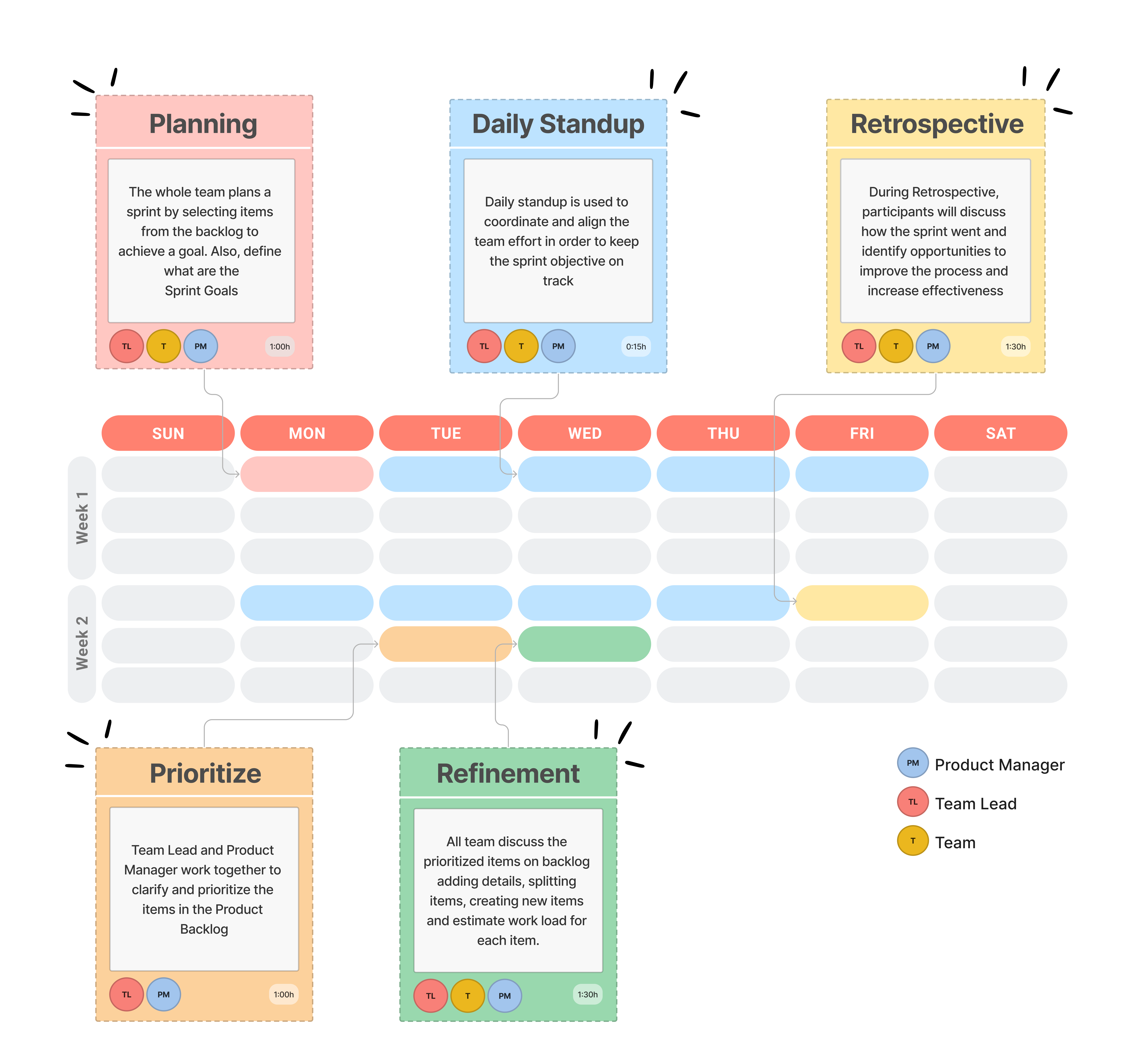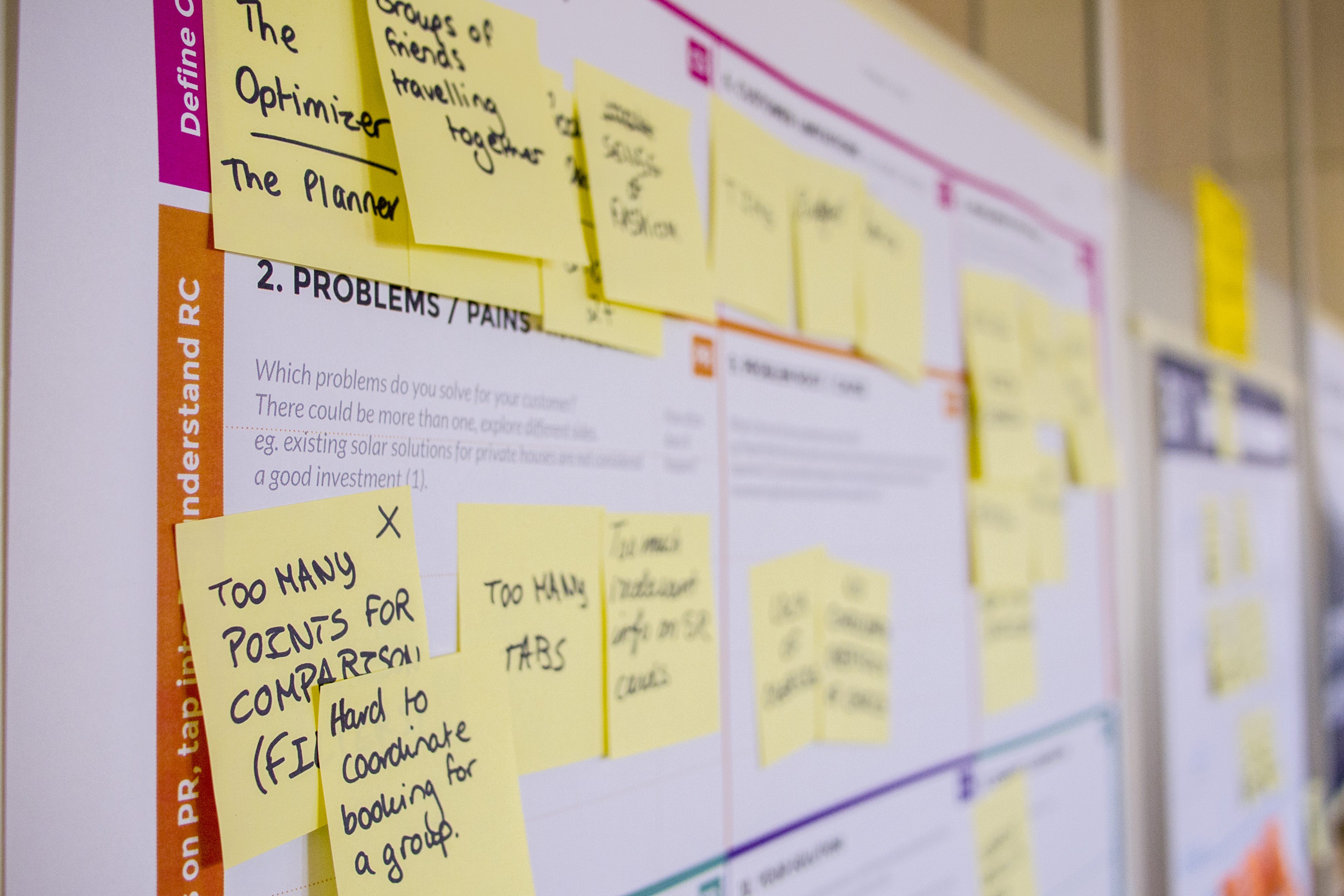Agile Scrum is a popular framework used to manage complex projects in a flexible and efficient manner.
It is based on Agile values and principles providing a structured approach to delivering high-quality products. It is widely used in software development companies and everyone has their own implementation of Scrum.
After years of working with various Scrum implementations, there are some common elements present in all variations. These moments can be synchronous or asynchronous, depending on the team’s ideology and its nature.
💡 Disclaimer The intention behind this article is not to be a description of Scrum “by the book”. There are many approaches based on Scrum this is one of them based upon experience of leading teams. Consider this as a practical example, rather than a strict definition.
What are the important moments in a sprint?

Let me detail what happens and what are the outputs of each meeting:
Sprint Planning
At the start of each sprint, the team meets to plan the work they will complete during the sprint. If everything on top of the backlog is ready to go, this meeting is pretty straightforward. You only need to push items to the sprint and assign them to team members.
When everybody feels comfortable with the workload to achieve the purpose of this sprint, it can start. The sprint goal should be defined collaboratively at the end of the planning session and will provide the team with focus and direction for the team.
I do not recommend estimating during sprint planning. It is too late to adjust priorities based on the estimates and may unnecessarily prolong the meeting. There’s a specific meeting to do that.
Daily Standup
A daily meeting where team members look at the sprint items and give a brief update on their progress toward the Sprint Goal. This meeting helps keep the team focused, aligned, and moving forward.
One technique we usually use is Walking the board: It helps us shift the focus from the people to the work we want to get done. Go from right to left starting from what is closer to getting done and walk the board towards work in progress. This way you will focus on finishing something every day.
Prioritize
Also known as Backlog Refinement, this is a continuous process where Backlog items are prepared and prioritized for upcoming sprints. The goal is to keep the top of the backlog in good shape and ready for the next refinement meeting.
Refinement
Refinement refers to ensuring that the items on top of the backlog are ready for the next sprint.
This can involve adding detail to existing items, defining acceptance criteria, estimating, deleting items, adjusting priorities, splitting items so they fit within the sprint, and creating new items.
Tip 1: Announce the items on the meeting agenda and try to involve everyone in this process by rotating the facilitator. Tip 2: This can be the most time-consuming meeting, so it’s important to stay within the allotted time. If additional time is needed to prepare items for the next sprint, schedule additional meetings of the same kind.
Retrospective
At the end of each sprint, the team meets to reflect on the sprint, identifies areas for improvement, and takes some action points to improve in the next sprint.
Tip: Choose a platform that allows everyone to write reflections as the sprint goes on. This ensures that nobody forgets anything that happened during the sprint and everyone can share their insights.
At Infraspeak, although there is freedom for each team to choose the methodology they want, this is a “formula” that has been successfully applied in some teams. With this being said, it is by no means a closed process and should be seen as an example, adapted to each team’s reality and the elements’ nature.
To close, I leave these two mentions:
If you want deep dive into Scrum, you can follow Maria Chec and her youtube channel. She has a good very good content for this kind of topic.
